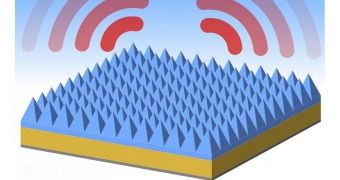Solar energy is an inexhaustible source of power, but mankind's means of harnessing that energy continues to be rather substandard. Now, though, a team of scientists has cracked one of the biggest problems: overheating.
Even the best solar cells peak at under 20% efficiency, which is a shame. The folks at MIT may have recently invented a means of capturing solar energy that turns heat into an advantage, but that technology (a sponge-like substance that absorbs sunlight and uses it to turn water into Steam) is still in early development stages.
Even after it is completed, that technology will not be applicable in all situations. That's why a new breakthrough, from Stanford this time, could become such a game changer.
A team under the guidance of professor Shanhui Fan has found a way to compensate for the natural tendency of things to overheat from too much sunlight exposure.
Loss of efficiency is just one of the problems that overheating can give solar cells, but it is the one that affects their practicality the most.
You see, each degree Celsius (1.8⁰ F) causes an efficiency drop of 0.5 percent. Moreover, with each increase in temperature of 10⁰ C (18⁰ F), the cells start deteriorating twice as fast.
Now picture this: the sunlight used to generate electricity heats up solar panels all the way up to 130⁰ F / 55⁰ C or higher. All the time.
Not a pretty picture at all. That's why the Stanford team decided to implement some sort of cooling mechanism. However, since solar cells need to be directly exposed to light in order to work, it wasn't easy to create a viable system.
They did it though. Their solution was to give each solar cell a very thin layer of specially patterned silica glass, which draws heat out of the cells themselves. All the while, no energy is used.
The pattern is made of microscopic pyramids and cones that are only a few microns thick each. They pull heat out in the form of infrared radiation, then send it back into the atmosphere through the same spectrum.
All in all, it is an excellent application of the way different wavelengths of light refract equally differently. Unfortunately, exact operating life and efficiency benefits have not been drawn up yet. We will have to wait a while until the team can appropriately speculate on the prospects of their work.

 14 DAY TRIAL //
14 DAY TRIAL //